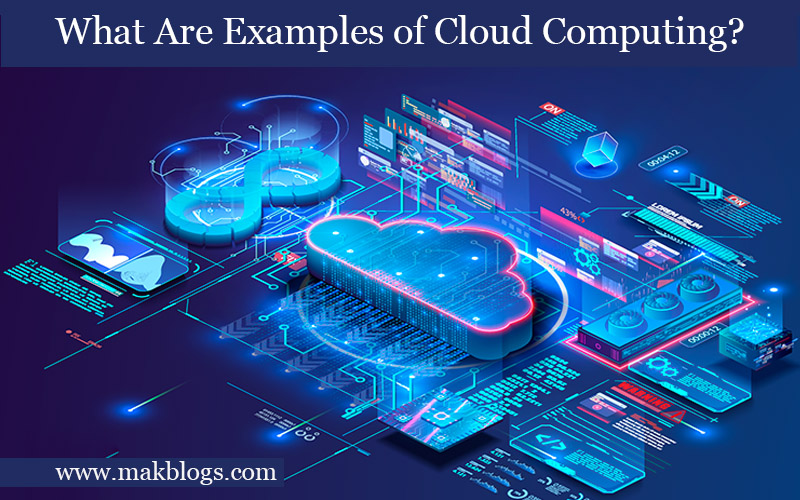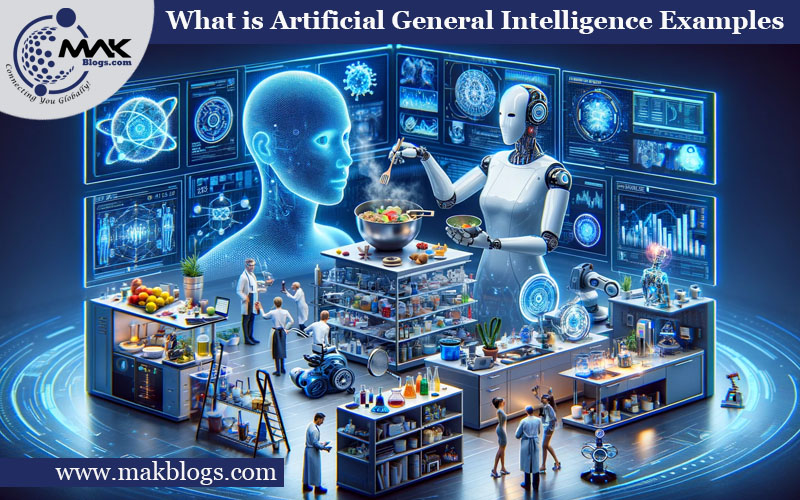Table of Contents
ToggleQuick Overview of “What Are Examples of Cloud Computing?”
In this comprehensive guide on “What are examples of cloud computing,” we explore the transformative power of cloud technology for businesses and individuals. Cloud computing offers IaaS, PaaS, and SaaS. These examples of cloud computing enable users to access resources, applications, and data over the Internet, revolutionizing how we store, process, and share information. Additionally, we delve into cloud storage solutions, cloud-based databases, cloud gaming, IoT cloud platforms, cloud-based AI services, hybrid cloud solutions, and cloud-based communication tools. Embracing cloud computing empowers organizations to scale, innovate, and stay competitive in the modern digital landscape, offering cost-efficiency, security, and seamless integration for enhanced productivity and growth.
What Are Examples of Cloud Computing?
Introduction
In today’s technologically advanced world, “What are examples of cloud computing” has emerged as a game-changer for businesses and individuals. It provides Internet-based services for managing resources, applications, and data. Cloud computing has revolutionized how we store, process, and share information, making it an integral part of modern digital Infrastructure. This article will explore various examples of cloud computing, exploring its diverse applications and benefits.
Examples of Cloud Computing
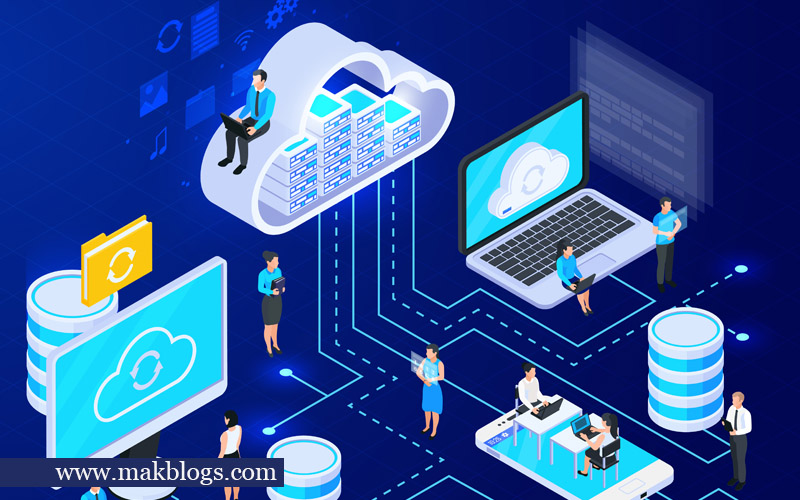
Here are the examples of cloud computing.
1. Infrastructure as a Service (IaaS)
Definition of IaaS
- This cloud computing concept does away with the requirement for owning physical hardware by providing virtualized computing resources through the Internet.
Flexible Resource Provisioning
- In the context of “what are examples of cloud computing,” IaaS offers on-demand scalability, enabling users to quickly and easily adjust computing resources based on their requirements.
- Example: A growing e-commerce website can scale its server capacity during peak shopping seasons.
Virtual Servers and Networking
- Users can rent virtual servers and networking components, such as routers and firewalls, from cloud service providers.
- Example: AWS EC2 instances allow businesses to launch virtual servers with various configurations.
Storage Solutions in IaaS
- IaaS providers offer scalable and cost-effective cloud storage options for businesses to store data.
- Example: Google Cloud Storage lets users store and access data securely from anywhere.
Cost-Efficiency and Pay-As-You-Go Model
- In the context of “what are examples of cloud computing,” IaaS operates on a pay-as-you-go pricing model, allowing users to pay only for the resources they consume.
- Example: An application development team can save costs by provisioning and releasing resources as needed.
2. Platform as a Service (PaaS)
Understanding PaaS
- PaaS allows developers to build, deploy, and manage apps without worrying about Infrastructure.
Advantages of PaaS
- Simplified Development: In the context of “what are examples of cloud computing,” PaaS abstracts complexities, allowing developers to focus solely on coding and application logic.
- Example: Google App Engine offers an easy-to-use platform for developers to deploy and manage applications effortlessly.
Wide Language and Framework Support
- PaaS supports multiple programming languages and frameworks, allowing developers to use their preferred tools.
- Example: Microsoft Azure App Service supports .NET, Java, Node.js, Python, and PHP for seamless application development.
Scalability and Elasticity
- Regarding “what are examples of cloud computing,” PaaS platforms automatically scale applications based on demand, ensuring optimal performance without manual intervention.
- Example: Heroku’s autoscaling feature automatically adjusts the number of dynos (containers) to handle varying traffic.
Integrated Development and Deployment Tools
- PaaS offers integrated tools for continuous integration, continuous deployment (CI/CD), and version control.
- Example: AWS Elastic Beanstalk provides built-in CI/CD capabilities for streamlined development and deployment.
3. Software as a Service (SaaS)
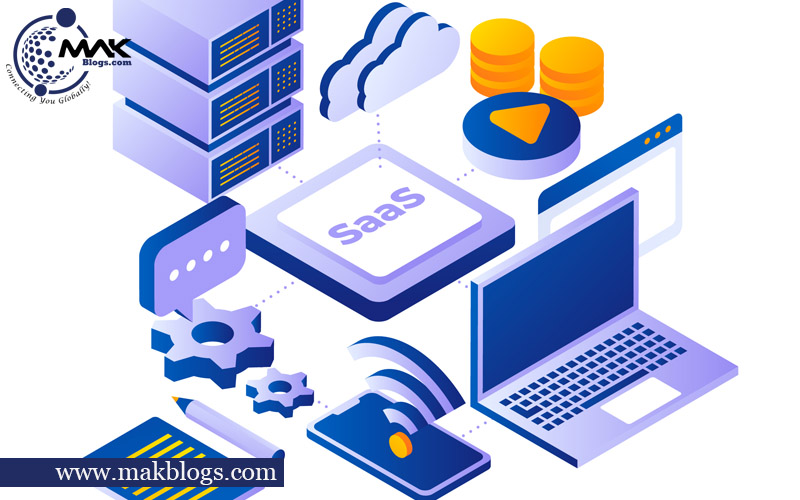
What is SaaS?
- SaaS is a cloud computing approach that delivers software applications by subscription over the Internet, removing local installs.
Advantages of SaaS
- Easy Accessibility: Regarding “what are examples of cloud computing,” easy accessibility is a key feature of SaaS applications. Users can access SaaS applications from any device with an internet connection, promoting remote work and collaboration.
- Example: Microsoft 365 provides cloud-based access to popular productivity tools like Word, Excel, and PowerPoint.
Cost-Effective Solution
- SaaS operates on a pay-as-you-go model, allowing businesses to avoid upfront software licensing costs and reduce IT maintenance expenses.
- Example: Slack offers different pricing tiers based on the number of users and features needed, making it cost-effective for businesses of all sizes.
Automatic Updates and Maintenance
- In the context of “what are examples of cloud computing,” SaaS providers handle software updates and maintenance, ensuring users always have access to the latest features and security patches.
- Example: Salesforce automatically updates its CRM software, relieving users from manual updates and disruptions.
Scalability and Customization
- SaaS applications can scale seamlessly based on user demand, accommodating varying workloads and growing businesses.
- Example: Zoom’s video conferencing service can effortlessly scale to host meetings with many participants.
4. Cloud Storage Services
What is Cloud Storage?
- Cloud storage lets users store and access data on remote servers managed by cloud providers.
- Example: Google Drive and Dropbox are popular cloud storage services for personal and business data storage.
Advantages of Cloud Storage
- Data Accessibility: Regarding “what are examples of cloud computing,” data accessibility is a crucial feature of cloud storage. Cloud storage promotes remote work and collaboration by letting users access their files and documents anywhere with an internet connection.
- Example: OneDrive by Microsoft seamlessly integrates with Microsoft 365, providing easy access to files across devices.
Scalability and Flexibility
- Cloud storage services offer scalability, allowing users to increase or decrease storage capacity based on changing needs.
- Example: Amazon S3 (Simple Storage Service) scales automatically to accommodate growing data volumes.
Data Security and Redundancy
- In the realm of “what are examples of cloud computing,” Cloud storage providers implement robust security measures and data redundancy to safeguard against data loss.
- Example: Box offers advanced security features like encryption and access controls to protect sensitive data.
Integration with Cloud Applications
- Cloud storage services seamlessly integrate with various cloud-based applications, streamlining data management and sharing.
- Example: iCloud integrates with Apple’s ecosystem, providing easy synchronization of files across Apple devices.
5. Cloud-based Database Solutions
What are Cloud-based Database Solutions?
- Cloud-based databases are hosted and managed on cloud platforms, offering secure and scalable data storage and management services.
- Example: Amazon Aurora is a cloud-based relational database service provided by AWS.
Advantages of Cloud-based Databases
- Scalability and Performance: In the context of “what are examples of cloud computing,” cloud-based databases’ scalability and performance are key features. These databases can automatically scale resources to handle fluctuating workloads, ensuring optimal performance during peak usage.
- Example: Google Cloud Spanner is a horizontally scalable and globally distributed database, ideal for high-traffic applications.
Data Security and Compliance
- Cloud database providers implement robust security measures to protect data from unauthorized access and ensure compliance with data regulations.
- Example: Microsoft Azure SQL Database offers advanced security features like data encryption and threat detection.
Real-time Data Insights
- In “What are examples of cloud computing,” cloud-based databases provide real-time data analytics, allowing businesses to get insights from their data swiftly.
- Example: BigQuery by Google Cloud allows users to run SQL-like queries on large datasets for fast and efficient analysis.
Integration with Cloud Applications
- Cloud-based databases seamlessly integrate with cloud-based applications, facilitating easy data synchronization and access.
- Example: Firebase Real-time Database, part of Google’s Firebase suite, offers real-time, real-time synchronization of data across web and mobile applications.
6. Cloud Gaming
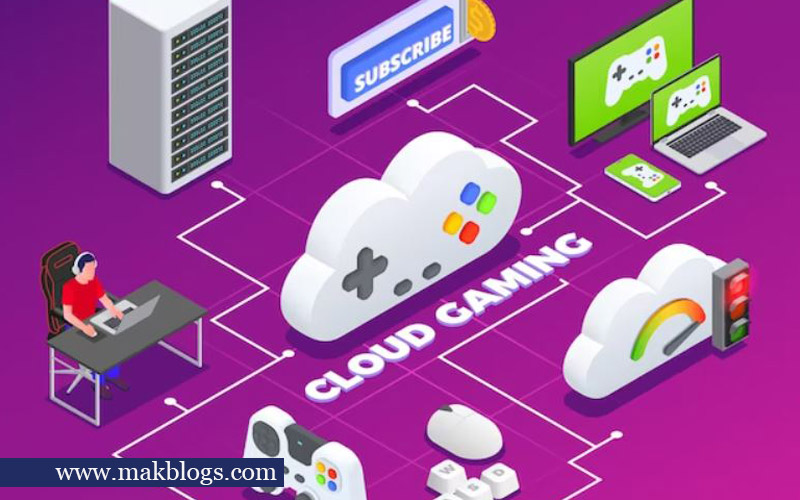
What is Cloud Gaming?
- Cloud gaming, or game streaming, is a cloud computing service allowing gamers to play video games over the Internet without needing powerful gaming hardware.
- Example: Google Stadia is a cloud gaming platform that lets users stream and play high-quality games on various devices.
Advantages of Cloud Gaming
- Accessibility: In the context of “what are examples of cloud computing,” Cloud gaming enables gamers to play their favorite titles on various devices, including smartphones, tablets, and smart TVs.
- Example: NVIDIA GeForce Now offers cross-platform support, allowing users to play games on Windows, macOS, Android, and more.
Low Latency and High Performance
- Cloud gaming providers use edge servers strategically located to reduce latency and deliver smooth and responsive gameplay.
- Example: Microsoft’s Xbox Cloud Gaming (formerly Project xCloud) ensures low latency by leveraging Azure’s global data center network.
No Downloads or Updates
- Regarding “what are examples of cloud computing, “Cloud gaming eliminates the need for game downloads and updates, as games are hosted on remote servers and streamed directly to the player’s device.
- Example: PlayStation Now offers a library of games that can be instantly streamed without downloading.
Gaming on Demand
- Cloud gaming allows gamers to access a vast library of games on demand, providing a flexible and cost-effective gaming experience.
- Example: Sony’s PlayStation Now and Xbox Game Pass offer subscription-based models that grant access to various games.
7. Internet of Things (IoT) Cloud Platforms
What are IoT Cloud Platforms?
- IoT cloud platforms enable seamless integration and management of Internet of Things devices and data.
- Example: AWS IoT Core is a robust cloud platform that securely facilitates the connection and control of IoT devices.
Advantages of IoT Cloud Platforms
- Scalability: In the context of “what are examples of cloud computing, “IoT cloud platforms can handle massive amounts of data from many IoT devices, scaling effortlessly as the number of connected devices grows.
- Example: Microsoft Azure IoT Hub supports millions of IoT devices, making it suitable for large-scale deployments.
Real-time Data Processing
- IoT cloud platforms offer real-time data processing and analytics, allowing businesses to derive valuable insights from IoT data as events happen.
- Example: Google Cloud IoT Core provides real-time data ingestion and processing capabilities for timely decision-making.
Security and Device Management
- In the realm of “what are examples of cloud computing, “IoT cloud platforms implement robust security features to protect IoT data and devices from potential threats and vulnerabilities.
- Example: IBM Watson IoT Platform offers authentication and encryption for secure communication between IoT devices and the cloud.
Integration with Other Cloud Services
- IoT cloud platforms seamlessly integrate with other cloud services, enabling businesses to leverage additional functionalities and applications.
- Example: Oracle IoT Cloud Service integrates with Oracle’s broader cloud ecosystem, allowing businesses to connect IoT data with enterprise applications.
8. Cloud-based Artificial Intelligence (AI) Services

What are Cloud-based AI Services?
- Cloud-based AI services are artificial intelligence solutions and tools delivered through cloud computing platforms, providing businesses access to advanced AI capabilities.
- Example: Google Cloud AI Platform offers AI tools for machine learning and data analysis.
Advantages of Cloud-based AI Services
- Scalability: Regarding “what are examples of cloud computing,” Cloud-based AI services can scale resources to handle complex AI workloads and accommodate growing demands.
- Example: AWS AI Services, like Amazon SageMaker, can scale machine learning models to train and deploy AI applications effectively.
Cost-Efficiency and Accessibility
- Cloud-based AI services operate on a pay-as-you-go model, allowing businesses to avoid high upfront costs associated with building and maintaining AI infrastructure.
- Example: Microsoft Azure Cognitive Services provide cost-effective AI capabilities, including vision, speech, and language services.
AI Model Deployment and Management
- Cloud-based AI platforms offer tools for deploying, monitoring, and managing AI models efficiently, streamlining the AI development lifecycle.
- Example: IBM Watson Studio automates AI model deployment and monitoring to ensure optimal performance.
Integration with Data and Applications
- Cloud-based AI services seamlessly integrate with data storage and other cloud services, enabling businesses to derive AI insights from their data and applications.
- Example: Oracle Cloud Infrastructure provides AI capabilities that integrate with Oracle’s suite of cloud services for a unified solution.
9. Hybrid Cloud Solutions
What are Hybrid Cloud Solutions?
- Hybrid cloud solutions combine on-premises infrastructure and cloud services, allowing businesses to integrate and manage data and applications across both environments.
- Example: By connecting on-premises VMware infrastructures with the AWS cloud, VMware Cloud on AWS provides a smooth hybrid cloud experience.
Advantages of Hybrid Cloud Solutions
- Flexibility and Scalability: “Hybrid cloud allows businesses to scale resources dynamically, leveraging the elasticity of the cloud while retaining control over critical data on-premises.
- Example: Microsoft Azure Stack enables organizations to deploy Azure services in their data centers for a consistent hybrid experience.
Data Security and Compliance
- Hybrid cloud solutions balance the security and control of on-premises data centers and the enhanced security features of cloud providers.
- Example: Google Anthos provides a secure and compliant way to manage applications across on-premises and cloud environments.
Cost-Optimization
- Regarding “what are examples of cloud computing, “Hybrid cloud enables businesses to optimize costs by using on-premises Infrastructure for stable workloads and tapping into the cloud for variable or bursty workloads.
- Example: IBM Cloud Pak for Integration allows organizations to connect applications and data across hybrid environments to improve efficiency and cost-effectiveness.
Disaster Recovery and Business Continuity
- A hybrid cloud facilitates robust disaster recovery and business continuity strategies by replicating critical data and applications between on-premises and cloud environments.
- Example: Oracle Cloud at Customer offers cloud services within on-premises data centers, ensuring data availability during unexpected outages.
10. Cloud-based Communication Tools
What are Cloud-based Communication Tools?
- Cloud-based communication tools are software applications hosted on cloud platforms that enable real-time communication, collaboration, and messaging among individuals and teams.
- Example: Slack is a popular cloud-based communication tool that facilitates seamless team collaboration through channels and direct messaging.
Advantages of Cloud-based Communication Tools
- Accessibility: Cloud-based communication tools allow users to communicate and collaborate from anywhere with an internet connection, fostering remote work and global team collaboration.
- Example: Microsoft Teams offers web, desktop, and mobile applications, ensuring access across various devices.
Real-time Communication Features
- Cloud-based communication tools provide real-time messaging, video conferencing, and file-sharing capabilities, enhancing team productivity and efficiency.
- Example: Zoom’s cloud-based video conferencing platform enables seamless virtual meetings and webinars.
Integration with Productivity Apps
- In the realm of “what are examples of cloud computing,” Cloud-based communication tools seamlessly integrate with productivity applications, enabling users to share files and collaborate on documents within the same platform.
- Example: Google Workspace (formerly G Suite) integrates with Google Meet for video conferencing and Google Drive for easy file sharing.
Security and Compliance Measures
- Cloud-based communication tools prioritize data security and compliance, implementing encryption and access controls to protect sensitive communications.
- Example: Cisco Webex, a cloud-based collaboration platform, meets industry security standards, including GDPR and HIPAA.
Conclusion
In conclusion, “What are examples of cloud computing,” cloud computing has transformed how businesses and consumers use technology. These cloud computing examples demonstrate its diversity and evolution from IaaS to SaaS. Embracing cloud-based solutions empowers organizations to scale, innovate, and stay competitive in an ever-changing digital landscape. With the flexibility, cost-effectiveness, and advanced capabilities offered by cloud computing platforms, businesses can leverage these examples of cloud computing to streamline operations, enhance productivity, and drive growth in the modern era of technology.
Reference:
For more information on cloud computing examples and services, visit Google Cloud’s official website: https://cloud.google.com/products.
FAQs About “What Are Examples of Cloud Computing?”
Real-life examples of cloud computing include:
Google Drive: Cloud storage that lets users save and access files from anywhere with an internet connection.
Netflix: A popular streaming platform that utilizes cloud servers to deliver on-demand video content to millions of users worldwide.
Salesforce: Salesforce is a cloud-based customer relationship management (CRM) platform enabling businesses to manage customer data and interactions.
Microsoft Office 365: Word, Excel, and PowerPoint on the cloud, accessible from multiple devices.
Read more in the above post titled “What are examples of cloud computing?”
Amazon Web Services (AWS) is an example of a cloud computing platform. Read more in the above post titled “What are examples of cloud computing?”
On-Demand Self-Service: Users can access and provision resources (e.g., storage, computing power) as needed without human intervention from the service provider.
Broad Network Access: Cloud services are accessible over the Internet from various devices, such as laptops, smartphones, and tablets.
Resource Pooling: Cloud providers consolidate resources to serve multiple customers, ensuring efficient use and optimizing resource allocation.
Rapid Elasticity: Cloud resources can scale up or down quickly based on demand, allowing flexibility and cost-effectiveness.
Measured Service: Cloud usage is metered, and customers pay for what they use, enabling cost control and optimization.
Read more in the above post titled “What are examples of cloud computing?”
Yes, Google Drive is an example of cloud computing. It lets users store, access, and share files online from several devices. Read more in the above post titled “What are examples of cloud computing?”
It refer to the fundamental concepts and principles of cloud technology. It involves delivering various computing services, such as storage, servers, databases, networking, software, and analytics, over the Internet. Users can access and utilize these services on-demand without needing physical infrastructure ownership, making it a flexible and cost-effective solution for businesses and individuals. Key characteristics of cloud computing include scalability, accessibility, resource pooling, and measured service, allowing users to pay for what they use. Read more in the above post titled “What are examples of cloud computing?”

